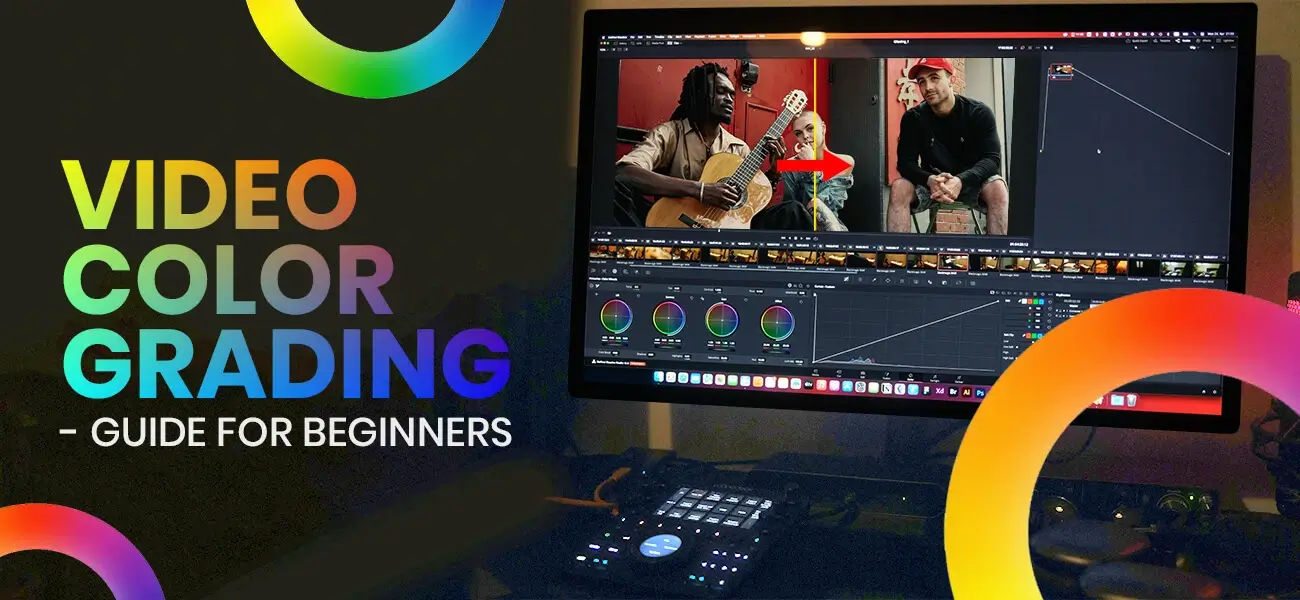Have you ever wondered the reason behind the craze for editing videos these days? In this social media era, video is the most consumed type of content by the audience out of all the types of online content. So editing a video before making it online is something every content creator looks for, hence the craze!
There are many features in video editing, but one feature that makes a video stand out from the rest is color grading. It’s a step in the post-production stage that gives an ordinarily shot video a super-elevated look!
So, without further delay, let’s see what color grading is in video editing.
What is color grading in video editing?
Color grading is a process of using consistent colors throughout an entire film or video file to convey a certain mood to the audience. It is a very important video editing technique nowadays and is solely done to make the video more engaging to the viewers by conveying the exact mood and message of the scene through color manipulation.
For instance, if a scene demands a spring setting but the sky is cloudy and the lighting is not exact during the shoot, the video editors try to balance the colors through color correction and then perform color grading on the footage. He might use warm white tones to depict spring in that particular footage.

Importance of color grading
Today’s audience wants motion content that is more realistic and convincing. Any director or video content creator aims to receive a good reaction from the audience who views their work. They want their viewers to relish every scene and connect with them mentally, and for that, they take multiple approaches. One such is color grading the film.
Color correction vs. color grading
Color correction is aimed at bringing back the original colors in video footage that were actually there in the real scene before shooting. Color grading is a technique to build the required atmosphere in the video as per the plot.
Color correction is the process of "repairing or fixing" the colors in a video. This process is done by matching the hues, saturation, white balance, etc., in and across all the video clips in the entire project. Editors color-correct the videos before color grading them to give them a well-balanced look before applying more colors to them.
When video editors color grade video, they try to enhance the colors of it to make it look more vibrant and appealing. It cannot be called "repairing or fixing" the video, as the colors are already balanced in it through color correction. They just need to be manipulated to convey a certain mood or visual tone.
Using LUTs (Look-up Tables) for color grading
LUT is a tool that allows filmmakers and video content creators to save a certain color grade as a template. It is a color grading preset that will instantly improve the look of your clip when applied. Each preset has a distinct style that highlights the required color per the scene, such as warm colors for fall, cool colors for winter, and so on.
Technically speaking, look-up tables use mathematical formulas to remap the present image’s value, which will undergo color grading to give a new image. More lucidly, LUTs collect the information on all the colors present in an image in the form of numbers and let these values undergo the preset mathematical formulas. The result of the calculation is information on a new set of colors that changes the final image.
LUTs are very easy to use. All you have to do is import the LUT file-> drag-> drop on the footage. Yes, it’s this simple!
What are the different types of color grading done in a video?
You can try these types of color schemes to color grade your video footage:
- Analogous color grading
- Moody color grading
- Vintage color grading
- Bleach Bypass
- Cross processing color grading
- High Key saturated color grading
- Triadic
Some of the best video color grading software
As color grading is to amplify the getup of your videos and bring the best out of the reel, some of the best software for color grading videos are:
- DaVinci Resolve
- Cinema Grade
- Adobe Premiere Pro
- Vegas Pro
- FilmConvert Nitrate
Benefits of color grading video footage
- Adds life to the raw camera footage and makes it appear lively and appealing.
- As color affects the psyche of human beings, color grading enables filmmakers to evoke responses in their audience.
- The more the audience likes the motion content, the more they will follow such filmmakers, and hence, the higher the follower count.
- Helps the content makers and filmmakers complete the project on time. Otherwise, waiting for the right weather or lighting conditions would cause delays.
Conclusion
Color grading has become one of the most crucial post-production techniques nowadays. Previously, people tried to convey the emotion of any scene through acting skills and audio tones. But as technology advanced, visual aesthetics became an important aspect of the entertainment industry.
Whether it's a movie, a commercial video, or daily video content, building a connection with the audience is the most sought-after thing. Playing with the colors of an entire film requires a lot of expertise. The type of color setting a particular scene demands can only be executed through experience.
Nowadays, every filmmaker or video content maker aims to offer refined visual content to their audience, marking a spike in demand for expert color grading services. So to get the right color per scene, companies providing high quality video editing services are unmatched.
